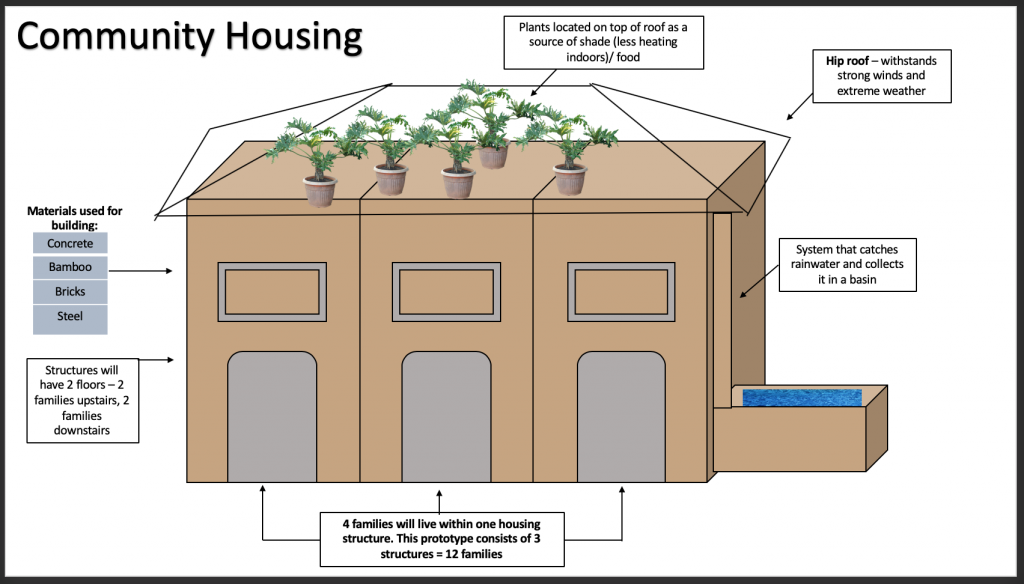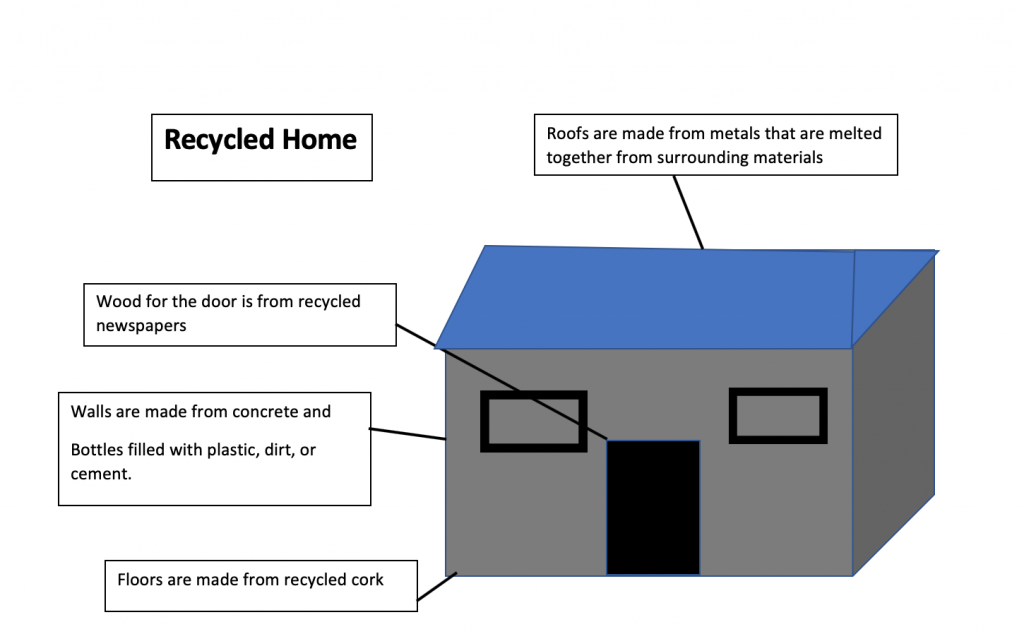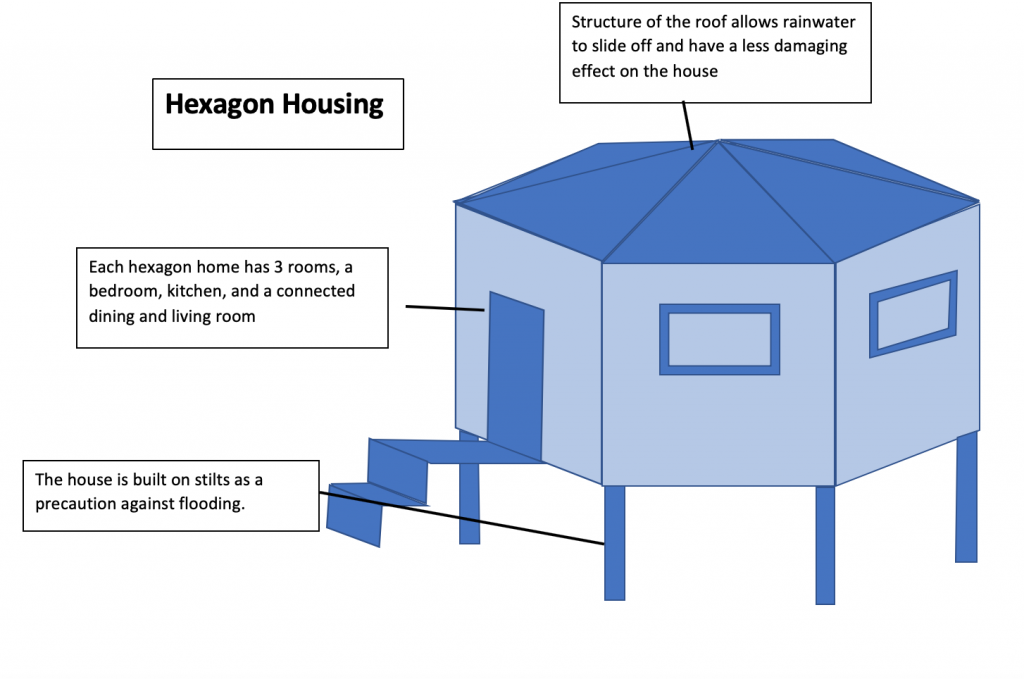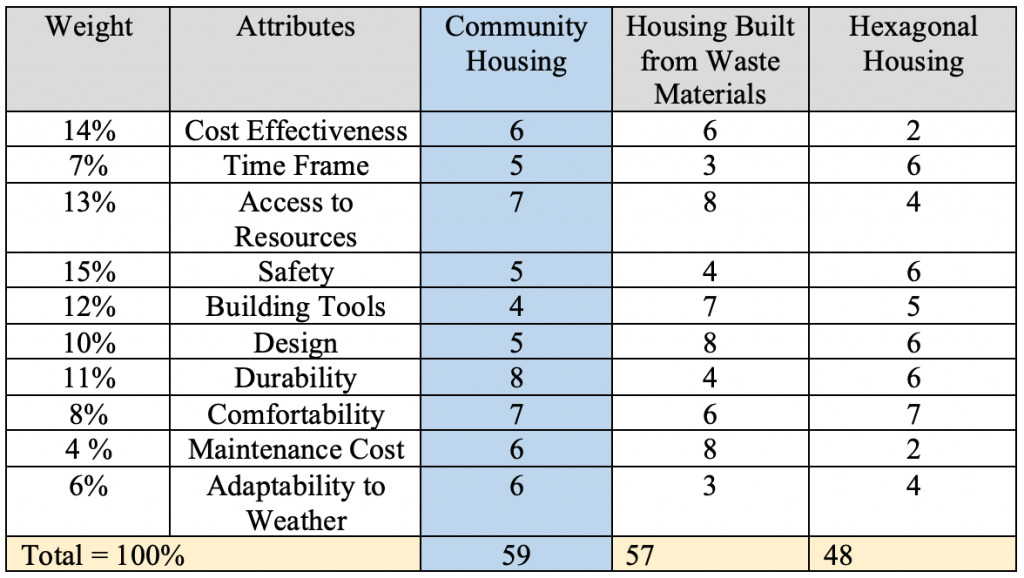How to alleviate hazardous living conditions with new housing structures
- Community housing
- Community building and participation – people of the community in the slums will help build new durable housing that will consist of multiple rooms per house allowing multiple families to live within.
- Bringing the slums community together allows them to be involved
- Housing will be constructed with durable materials that will uphold extreme weather (typhoons) while also adapting to it
- By having families in separate rooms, it decreases the risk of spreading infectious disease
- Including bamboo in the structure (use of natural resources)

2. Build the housing using materials made from the waste products being currently used
- Cost-effective
- We can use a water bottle filling it with dirt or cement and stacking it on top of each other.
- It’s like reusing what is already there but makes better more durable housing
- Bamboo can also be used although it is not a waste product it will benefit the structure (if bamboo is being used a concrete stump must be put into place as bamboo will rot quicker if it is in contact with the ground)
- Using materials made from waste allows easy accessibility for people in the Philippines
- Eco-bricks – they are bricks basically made out of plastic, this goes with the water bottle used during construction
- The whole idea of this solution is to help get rid of waste (because there is an abundance of it) while reusing it into clean materials that can be used to build stable housing

3. Low-cost hexagonal shelter
- This option is a little more costly in reference to the other two solutions but can still work
- Hexagonal housing is made from steel and foam panels
- Is quite durable against extreme weather
- Delivered by truck to whichever site we settle with
- Last 15-20 years roughly
- Houses can be combined to create larger homes (can be rearranged basically, customized to fit people’s needs)
- Basin that collects rainwater is built off the side of the house
- Solar panels
- Two ventilation shafts located on each side of the house
- This will allow ventilation because the walls are ceiling are not completely connected
- Made with steel and foam panels
- Making the structure to have dome-shaped roofing to protect from typhoons

After coming up with three solutions that we feel could be potential solutions for our problem, we used a decision matrix to help us decide which would be the best solution to go for.

After completing the decision matrix, the final solution we chose to go with for our problem of alleviating hazardous living conditions with new housing structures is community housing.
